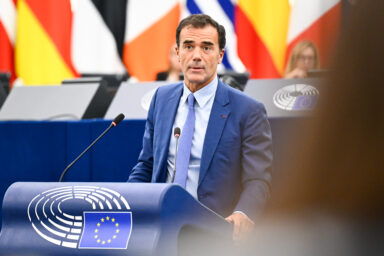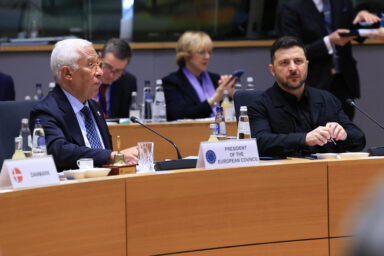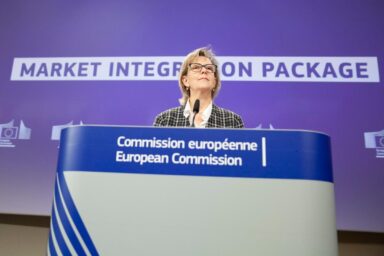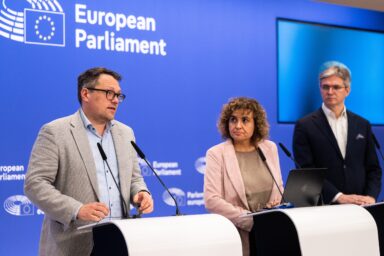The European Commission has formally approved Sweden’s €300 million strategic electricity reserve, endorsing the measure under EU state aid rules as a necessary safeguard against winter supply shortfalls.
The Commission gave the green light to the Swedish emergency project on Tuesday, 29 June. The reserve, operational until 2035, will compensate power generators, storage operators and large electricity consumers for maintaining idle capacity that can be activated during emergencies – primarily in winter months when demand risks overwhelming Sweden’s grid.
“The measure approved today is a well-designed capacity mechanism that will ensure security of Sweden’s electricity supply,“ commented Teresa Ribera, EC Vice-President. “This reduces the risk of blackouts in the winter months. At the same time, the capacity funded through the measure will not participate in electricity markets, which limits any potential distortion of competition.“
Volume vs. speed
This market-based mechanism is to comply with the bloc’s 2022 Climate, Environmental Protection and Energy Aid Guidelines (CEEAG). It also underscores the EU’s fraught balancing act between energy security and climate imperatives.
Functioning as a capacity mechanism, the reserve remunerates participants – including fossil-fuel plants, battery storage systems and industries capable of reducing consumption – for holding resources outside regular electricity markets. Eligibility hinges on meeting CO2 emission limits outlined in the EU Electricity Regulation, which mandates that capacity measures must not unduly hinder decarbonisation efforts.
You might be interested
Projects compete in a transparent bidding process, allocating aid according to two criteria: the amount necessary per megawatt of capacity and the speed at which units can begon operation during shortages. Selected beneficiaries, once contracted, may not participate in standard electricity markets to prevent distortions – a safeguard the Commission deemed critical to its approval.
The Commission’s rationale
Approval rested on Stockholm’s ability to demonstrate the reserve’s necessity under Article 107(3)(c) of the Treaty on the Functioning of the European Union, which permits state aid for initiatives that advance EU objectives without disproportionately harming intra-bloc competition.
The Commission concluded Sweden’s reserve met this threshold, citing evidence that existing power units would retire without public support and that new investments in backup capacity would stall. Key to the decision were safeguards against market abuse, including a requirement for operators with significant market power to prove a “funding gap” – the difference between projected revenues and costs – to qualify for aid. “The positive effects outweigh any potential distortion of competition and trade,” the Commission stated, adding that the measure aligns with the EU Electricity Regulation’s provisions on strategic reserves.
The capacity funded through the measure will not participate in electricity markets, which limits any potential distortion of competition. – Teresa Ribera, EC Executive Vice-President for Clean, Just and Competitive Transition
While the reserve’s design includes emission caps and competitive bidding to align with climate goals, its 2035 end date raises questions about its role in Sweden’s longer-term energy transition. The mechanism accommodates legacy infrastructure like Vattenfall’s oil-fired Stenungsund plant, which entered temporary activation during the severe cold of 2010 – a stopgap solution the reserve aims to institutionalise.
Tensions and trade-offs
This reliance on fossil-fuel contingencies, albeit under CO2 limits, highlights the tension between immediate supply guarantees and the EU’s broader Green Deal ambitions. The CEEAG framework, which governs such aid, explicitly requires member states to first address market flaws – such as outdated pricing mechanisms or regulatory barriers to renewable integration – before resorting to capacity mechanisms. Sweden’s reserve passed this test, with Brussels concluding that market reforms alone could not mitigate winter supply risks.
The reserve seeks to address systemic vulnerabilities in Sweden’s emergency infrastructure. Existing backup plants, many oil-fired and decades old, are insufficient to meet normal demand. During crises, authorities deploy Styrel (“steering electricity”), a protocol that cuts power to households and non-essential businesses to prioritise hospitals, emergency services and critical infrastructure.
Facilities like the Swedish Parliament, police headquarters and broadcaster Teracom maintain localised backup generators, but these are one-off solutions. The 2010 Stenungsund activation – a reactive measure during extreme cold – exposed the inadequacy of ad-hoc responses, prompting calls for a coordinated reserve.
Implementation challenges
The Commission’s approval reflects the EU’s cautious embrace of capacity mechanisms as transitional tools amid energy market upheavals. The CEEAG guidelines, revised in 2022 to prioritise Green Deal objectives, permit such measures only if they avoid inflating consumer prices, disadvantaging cross-border electricity flows or entrenching incumbent operators.
Sweden’s inclusion of demand-response units – large consumers that reduce usage during peaks – sets a precedent for leveraging industrial flexibility to enhance grid resilience. However, the reserve’s decade-long horizon leaves open whether fossil-fuel dependencies will be phased out or merely prolonged under emission constraints.
With bidding set to begin in 2026, the reserve’s success hinges on attracting diverse participants while enforcing CO2 limits. Network operators will monitor idle plants to ensure readiness, and beneficiaries must regularly justify funding needs. For Swedish households, the scheme offers no immediate reprieve from Styrel’s rationing protocols – a reminder that financial incentives alone cannot resolve structural grid limitations. As winters grow increasingly volatile, the reserve represents both a pragmatic fix and a test of the EU’s ability to reconcile security with sustainability.











